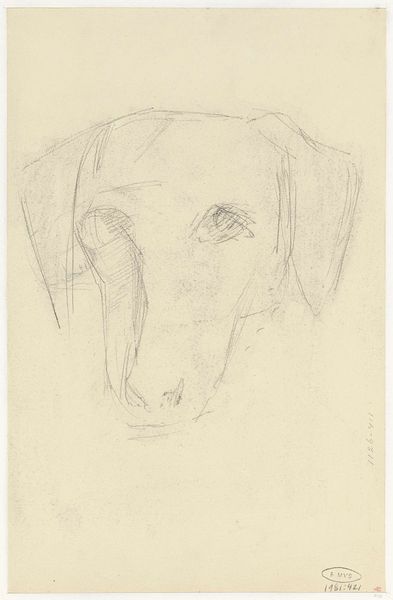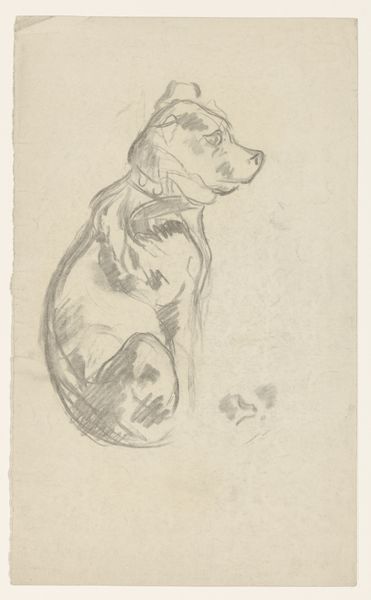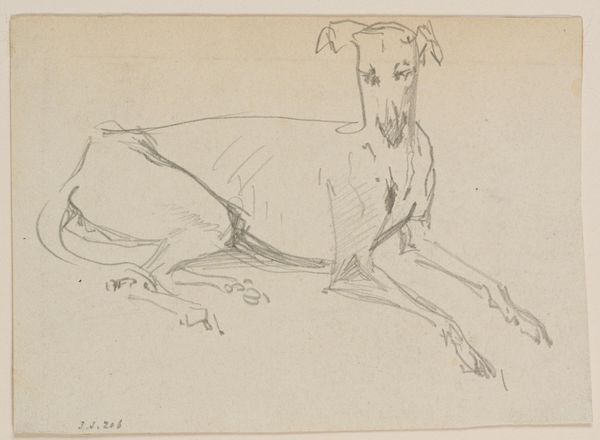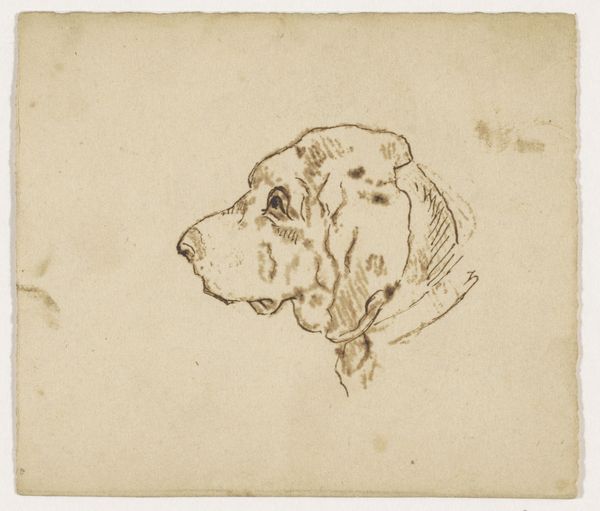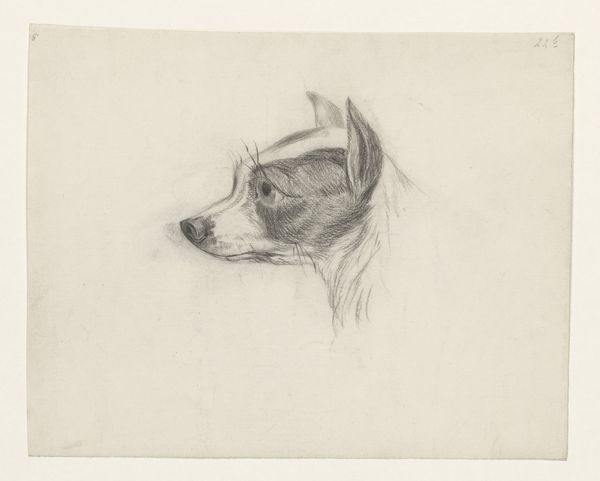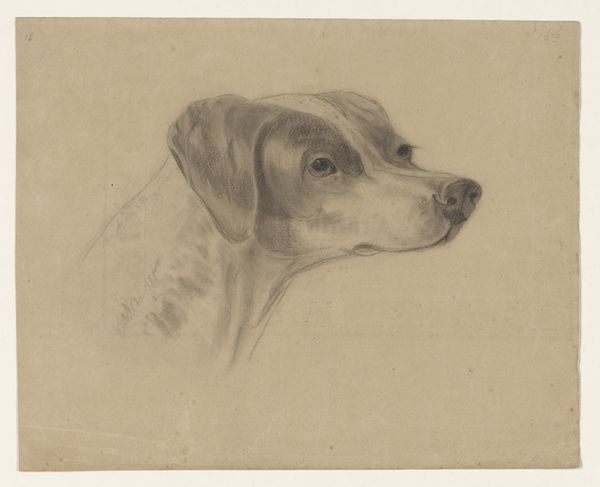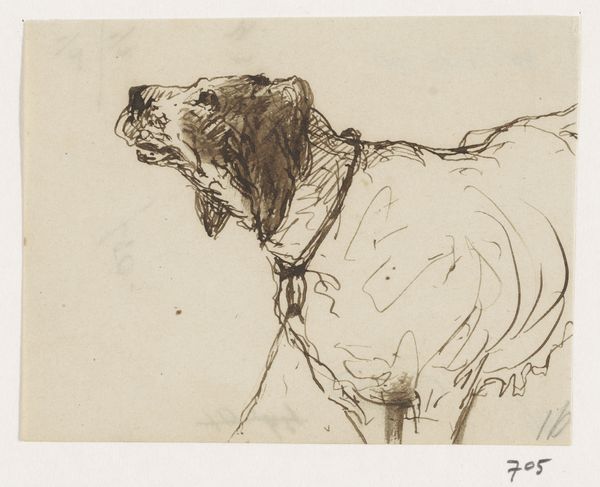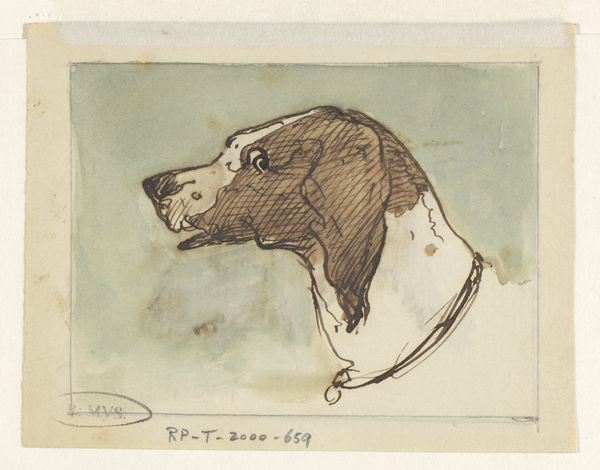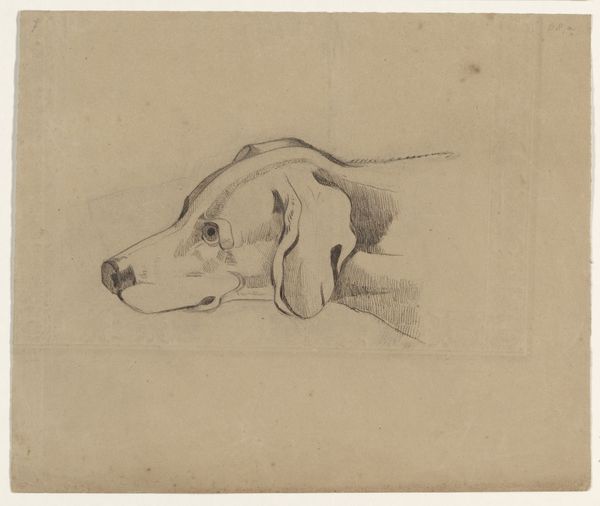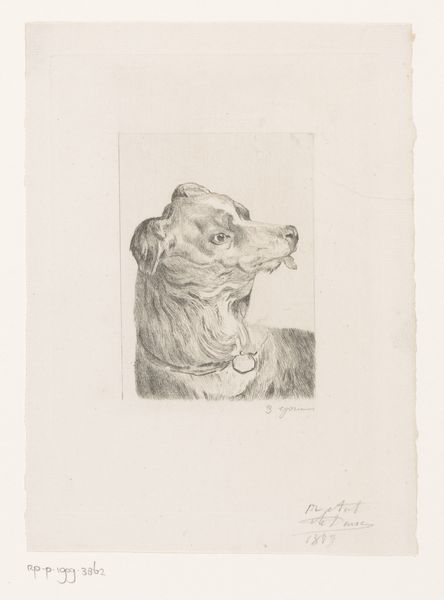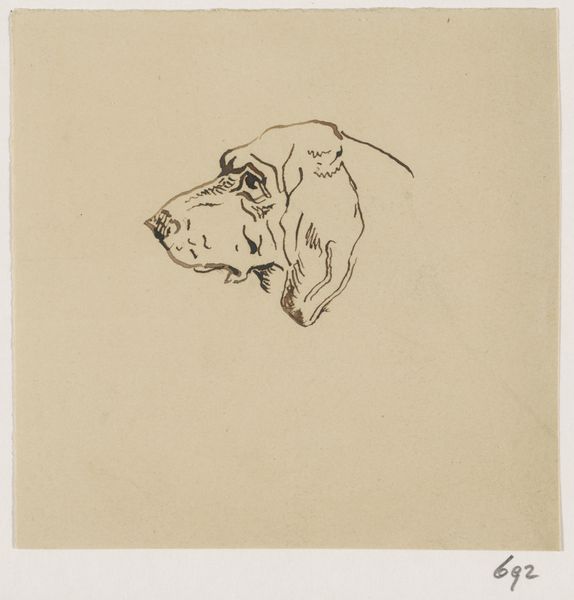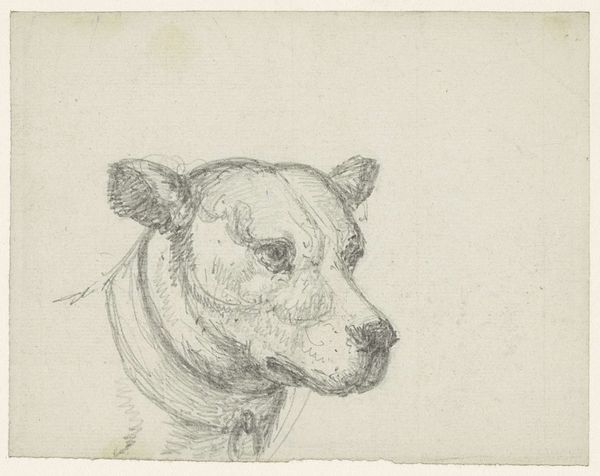
drawing, ink, pen
#
portrait
#
drawing
#
animal
#
pen sketch
#
figuration
#
ink
#
line
#
pen
Dimensions: height 87 mm, width 108 mm
Copyright: Rijks Museum: Open Domain
Curator: Johannes Tavenraat gifted us this pen and ink drawing in 1876. Titled simply, "Head of a Dog," it’s currently part of the Rijksmuseum collection. Editor: It’s such an economical image! Just a few strokes of ink and instantly, you perceive the sad, patient, watchful nature of the animal. There is something inherently moving. Curator: Indeed. Considering the materials – common pen and ink – one might consider the circumstances of production. Was this a study? A commissioned piece, or a quickly sketched gift for a family member? Editor: Or a symbol? Dogs have such a powerful presence in art, often representing loyalty and fidelity, but also vigilance. Notice the eye – slightly enlarged, intense, almost anthropomorphic in its watchfulness. What do you make of it? Curator: Well, it's just ink on paper. But the paper itself offers clues. See how the edges are roughly cut? That suggests a readily available material, perhaps scavenged or leftover from other, more significant, artistic endeavors. This speaks of the practicality, the cost-effectiveness, and maybe even the lower social standing of animal portraiture at the time. Editor: Perhaps, or perhaps its informality speaks to the close relationship the artist has with his subject. Think of Argus, Odysseus' faithful hound. That loyalty, devotion—Tavenraat has caught it perfectly with the image of his patient watchfulness, despite the limitations of his artistic rendering, creating more empathy than fidelity. Curator: Limitations are always interesting— the type of ink would matter for how easily he could use it and apply it, wouldn't you agree? What sort of artisanal tools were available and how widely could the paper be disseminated at the time it was made. All things considered, you must admire how the artist uses simple resources, making what is accessible universally beautiful. Editor: Universally beautiful, perhaps because it strikes such a chord of emotional recognition in us even now. So much meaning evoked with the simplest of means. It's like the Platonic ideal of dogginess somehow shining through. Curator: Perhaps! Well, food for thought about what we consume versus what the materials that form the very groundwork of artistic output cost to procure!
Comments
No comments
Be the first to comment and join the conversation on the ultimate creative platform.
